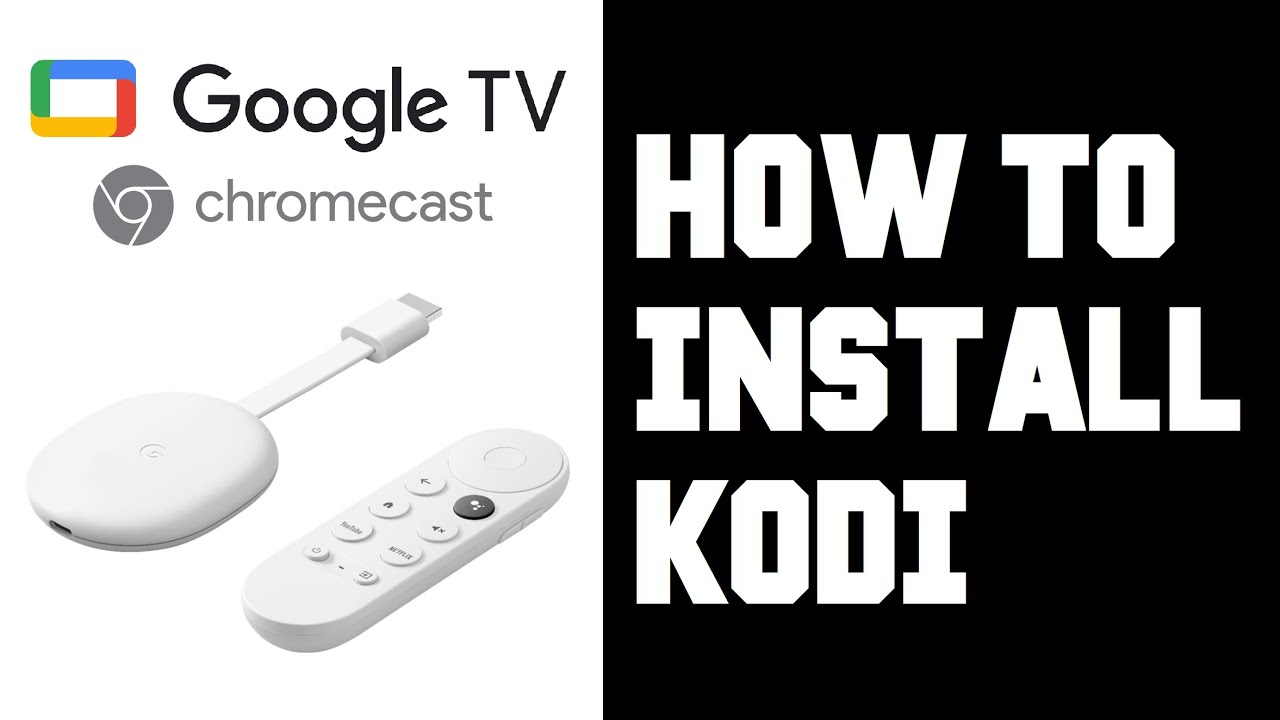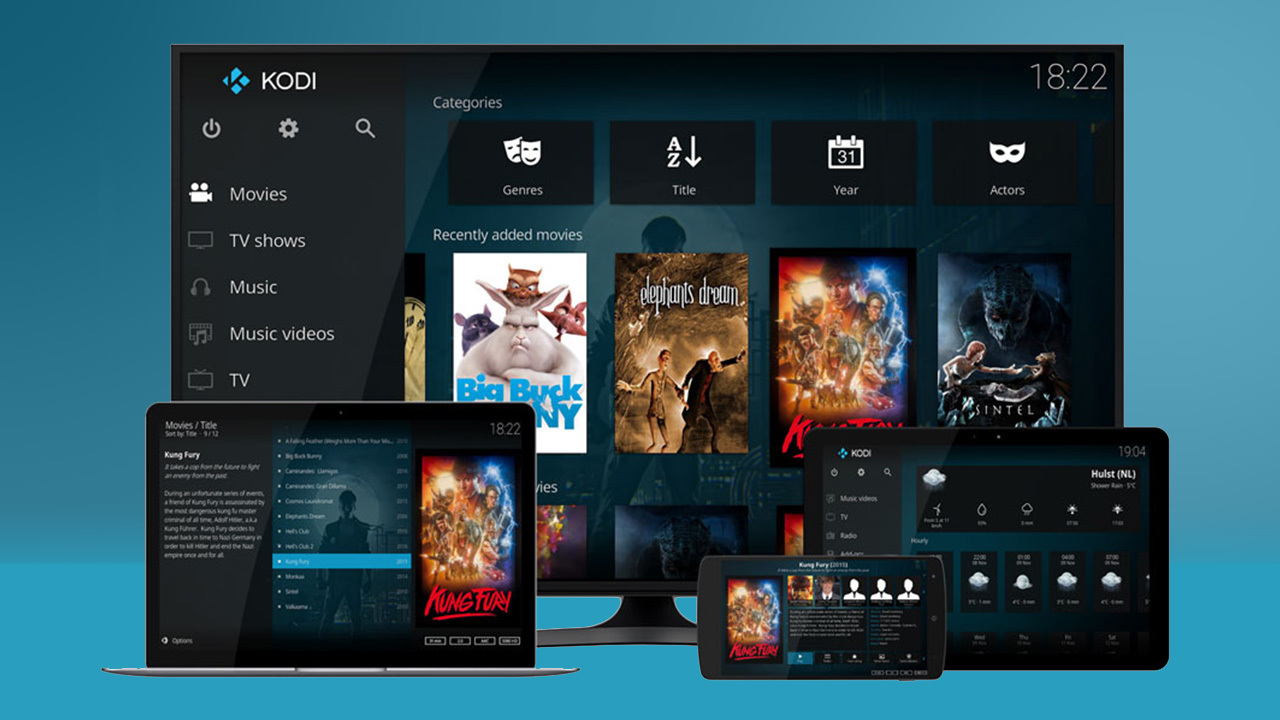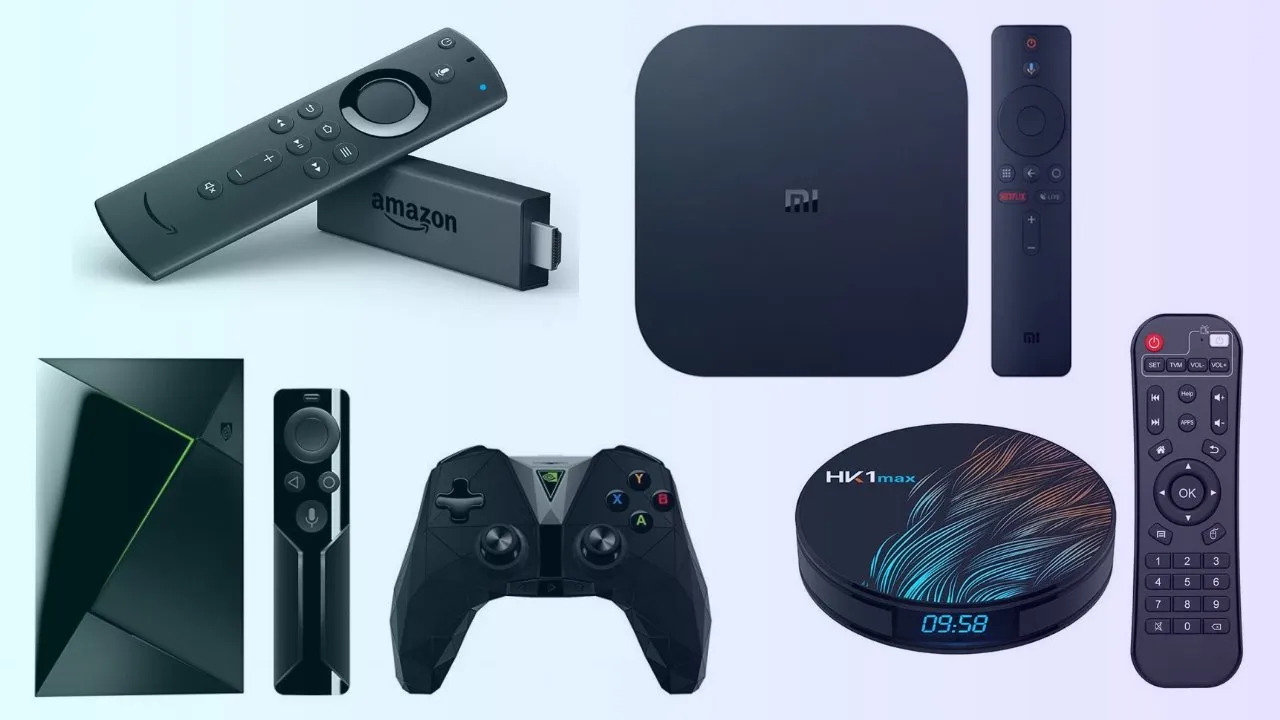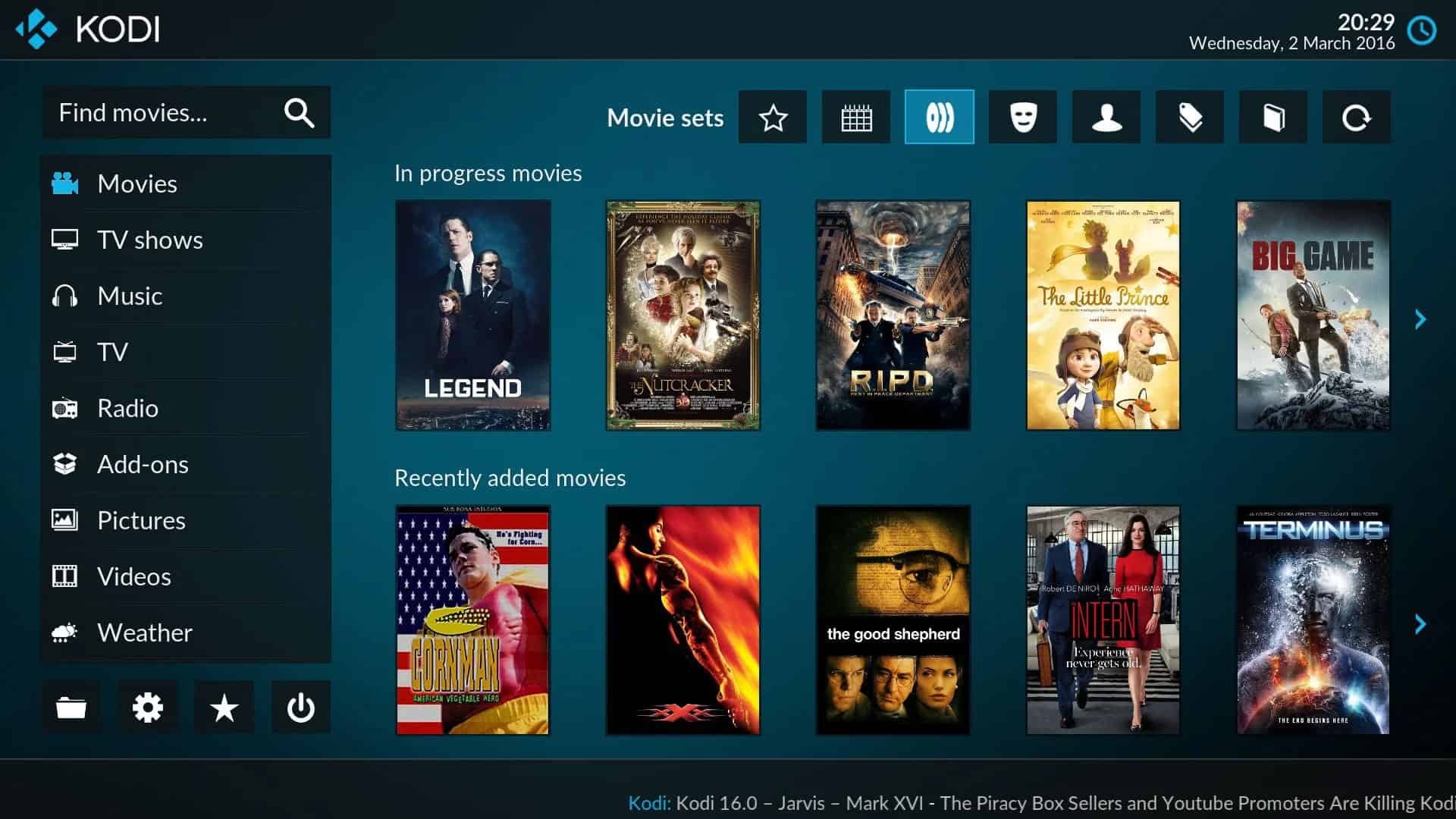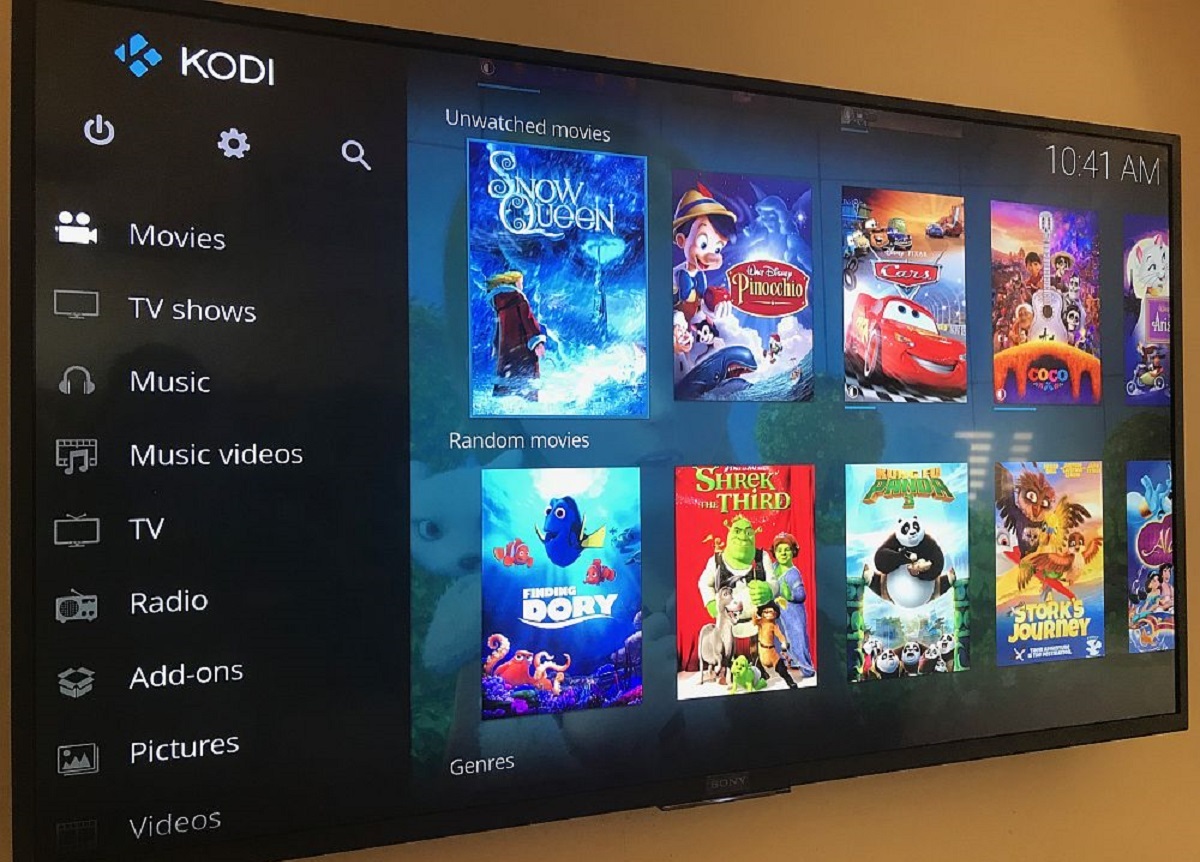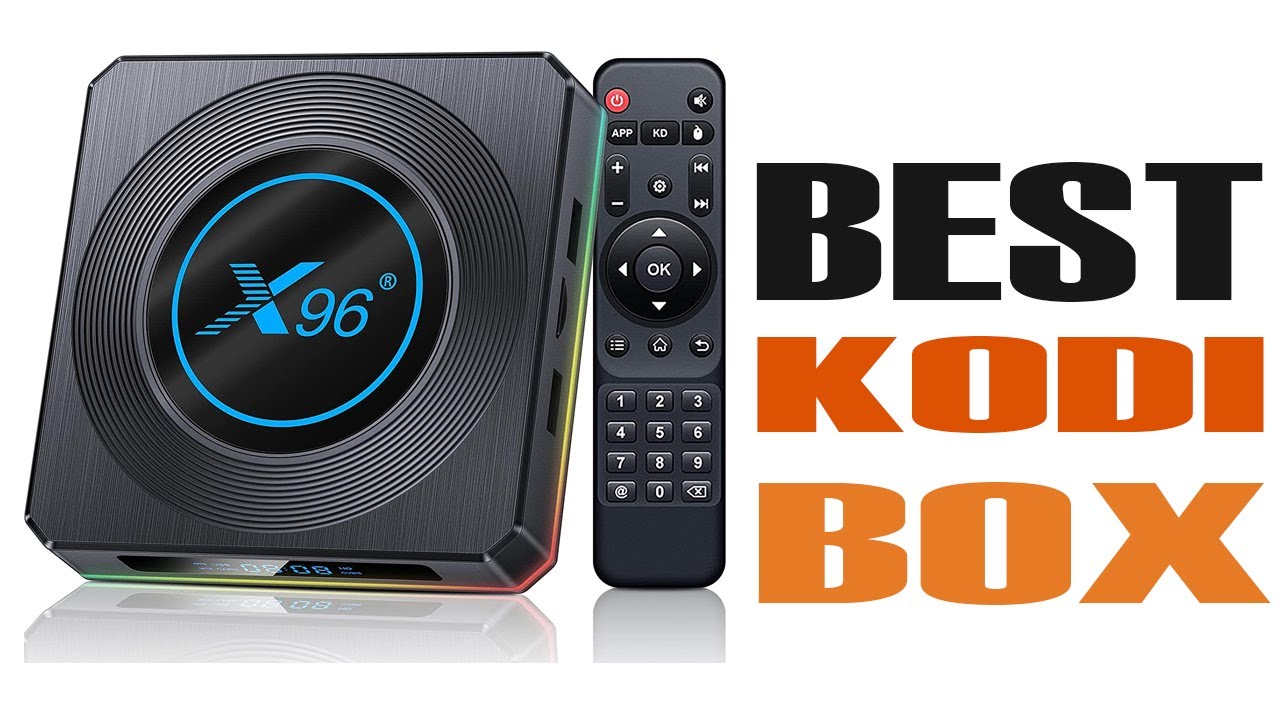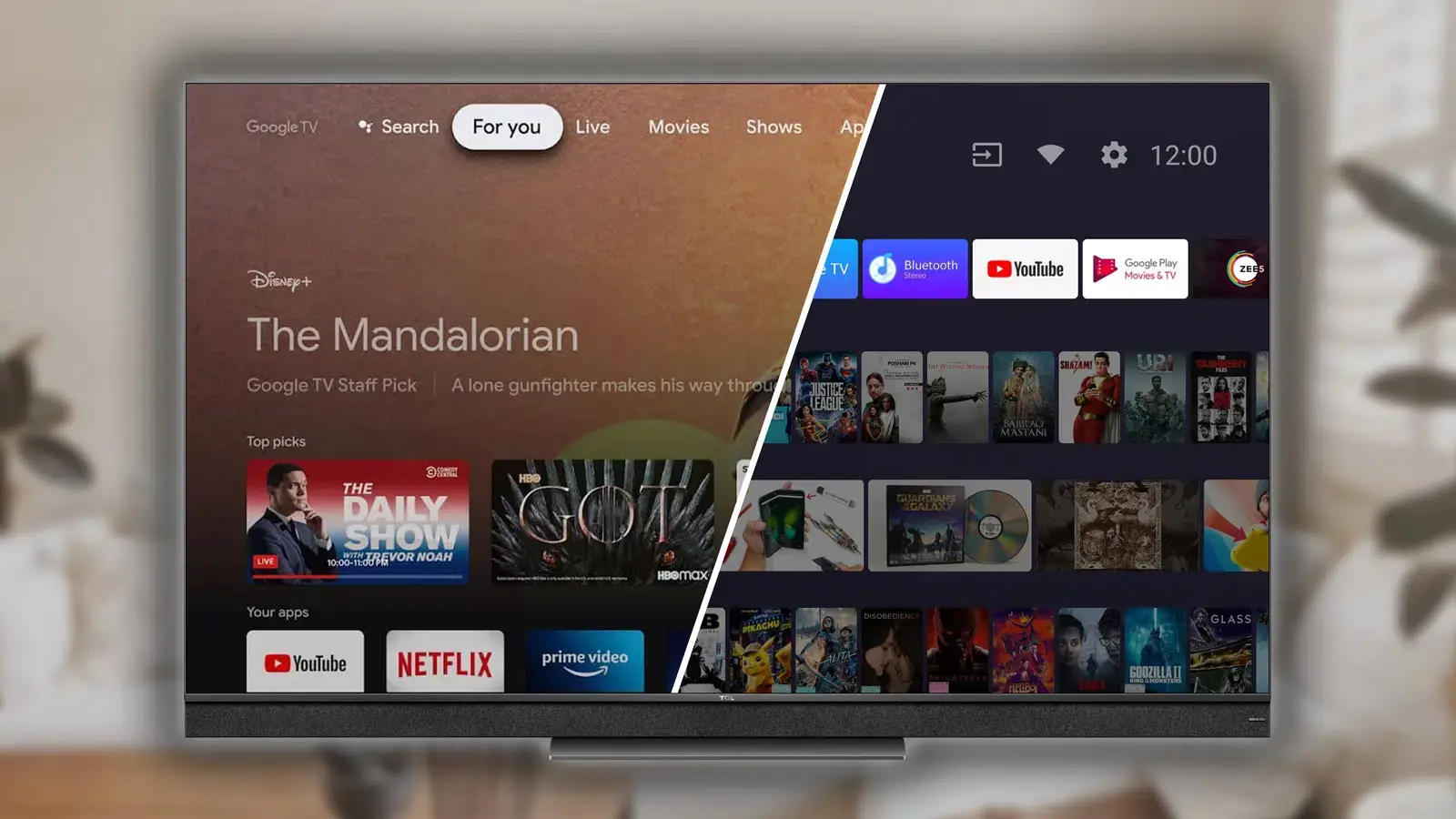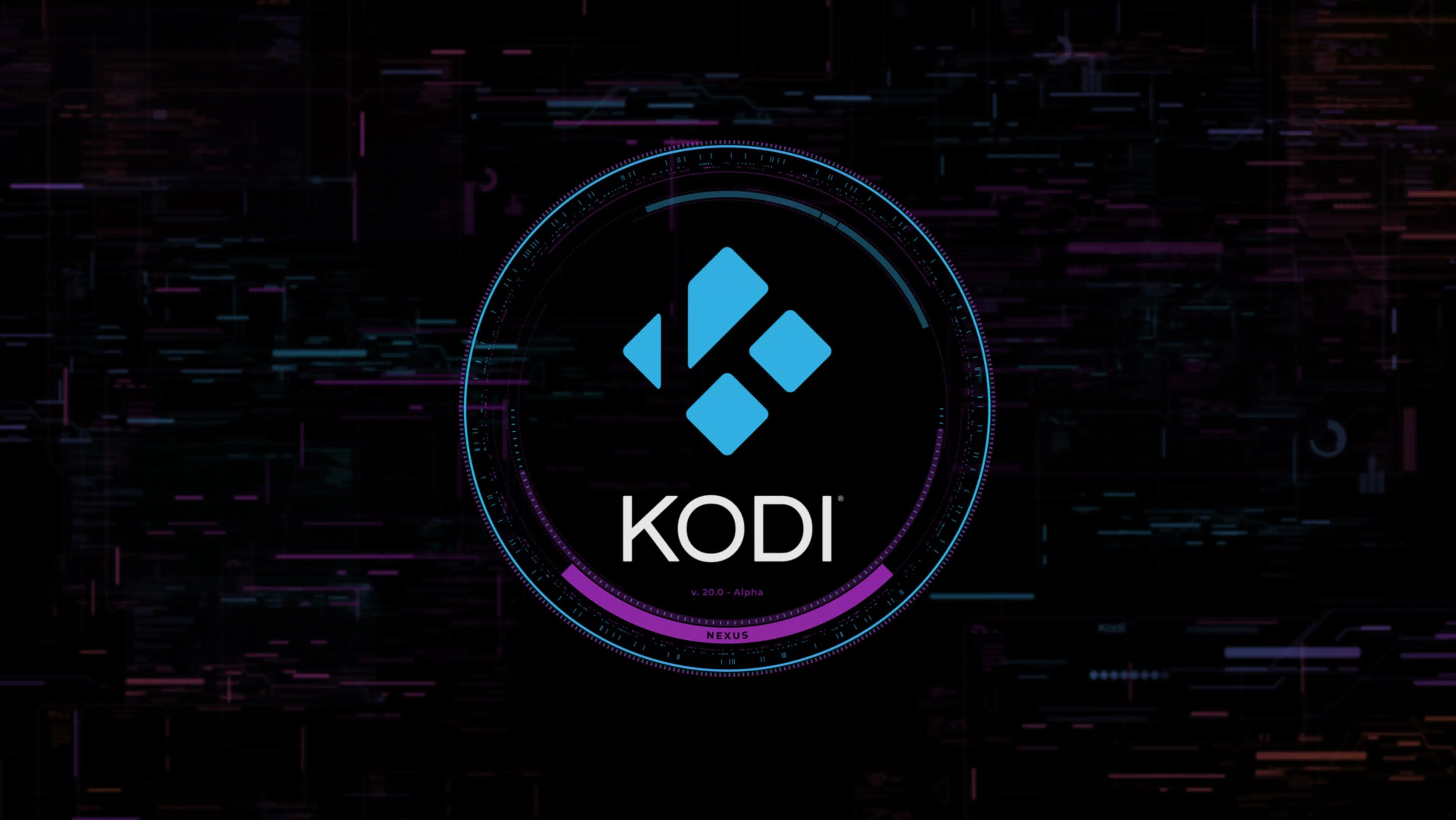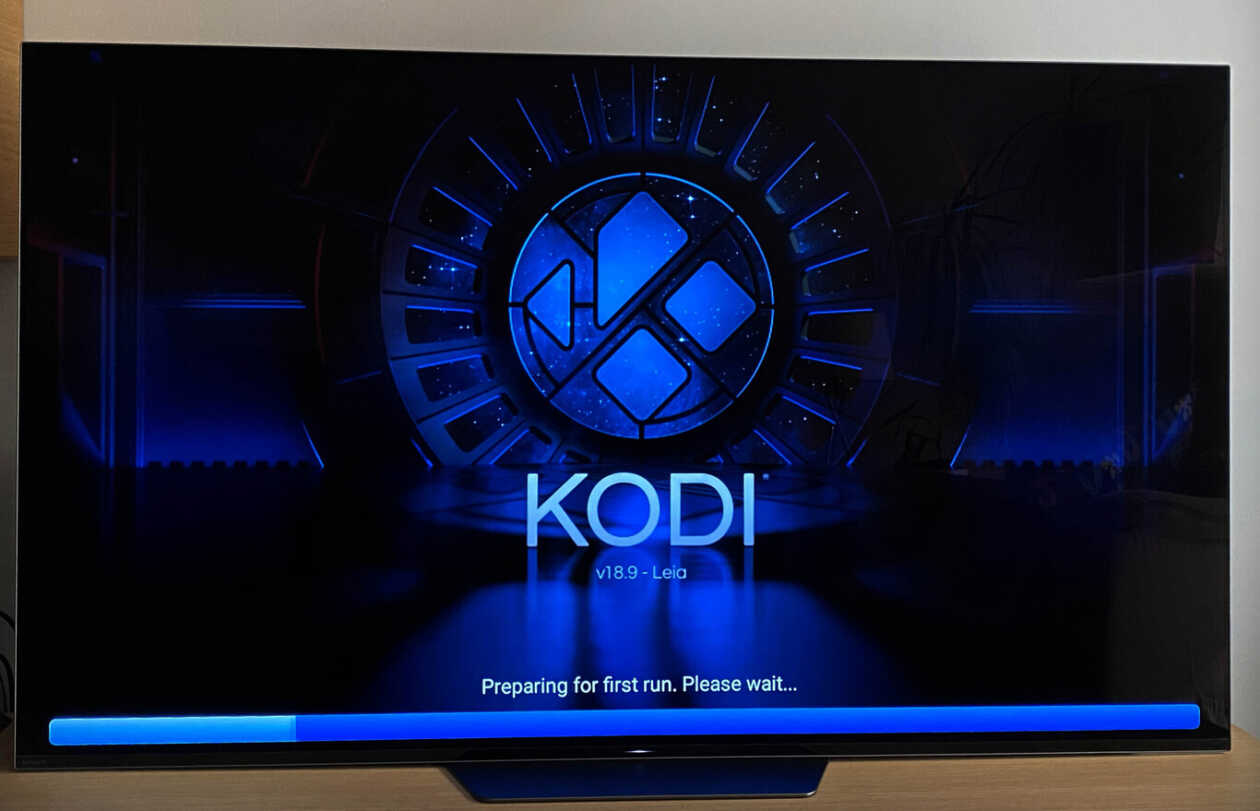Introduction
Welcome to the world of Kodi and Chromecast! If you’re a fan of streaming content and want to enhance your entertainment experience, combining Kodi and Chromecast can be a game-changer. In this guide, we’ll take you through the process of loading Kodi on Chromecast, allowing you to access a wide range of multimedia content and cast it to your TV with ease.
Before we dive into the specifics, let’s briefly understand what Kodi and Chromecast are.
Kodi is a popular open-source media player that gives you the ability to access and stream a variety of content, including movies, TV shows, music, live TV, and much more. With its user-friendly interface and a vast library of add-ons and plugins, Kodi offers a versatile and customizable media experience for users.
On the other hand, Chromecast is a streaming device developed by Google that allows you to cast or mirror content from your smartphone, tablet, or computer to your TV. By connecting your Chromecast dongle to your TV’s HDMI port, you can seamlessly stream video, audio, and images from various online platforms and mobile apps.
Combining Kodi and Chromecast means you can take advantage of Kodi’s extensive media library and customization options and enjoy it on the big screen using Chromecast. Whether you want to watch your favorite TV shows, explore new movies, or listen to music, this powerful duo is your ticket to unlimited entertainment.
Now that you have a basic understanding of Kodi and Chromecast, we’ll guide you through the process of loading Kodi on your Chromecast device. Keep reading to learn the steps and configuration needed for this seamless integration of two fantastic media platforms.
Part 1: Understanding Kodi and Chromecast
In order to successfully load Kodi on Chromecast, it’s important to have a solid understanding of both Kodi and Chromecast. Let’s delve deeper into what these two platforms offer and how they work together.
Kodi, formerly known as XBMC (Xbox Media Center), is an open-source media player software. It allows you to organize and play your digital media files, including videos, music, podcasts, and even live TV. With a user-friendly interface and an extensive range of customizable features, Kodi has gained immense popularity among media enthusiasts.
One of the most exciting aspects of Kodi is its ability to support add-ons and plugins. These extensions enhance the capabilities of Kodi by allowing you to stream content from various online sources, access streaming services, and even customize your interface. From popular add-ons like Exodus and Seren to music streaming services like Spotify, Kodi offers a vast ecosystem of add-ons to cater to your specific needs.
On the other hand, Chromecast is a small streaming device developed by Google. It plugs into your TV’s HDMI port and connects to your Wi-Fi network, allowing you to cast content from your smartphone, tablet, or computer directly to your TV screen. Using your mobile device as a remote control, you can stream videos, music, and even mirror your entire screen onto the TV.
Chromecast supports a wide range of popular streaming apps like Netflix, YouTube, Hulu, and many more. With the ability to cast content from your favorite apps and websites, Chromecast offers a convenient and seamless way to enjoy your favorite entertainment content on the big screen.
Now that we have a better understanding of Kodi and Chromecast, let’s move on to the next part of our guide, where we will prepare our devices for the Kodi and Chromecast integration. Make sure you have Kodi installed on your device and a Chromecast dongle ready for the upcoming steps.
Part 2: Preparing Your Device
Before you can load Kodi on your Chromecast, it’s important to ensure that your devices are properly prepared and set up. In this section, we will guide you through the necessary steps to get your devices ready for the integration.
First, make sure you have a compatible device to install Kodi on. Kodi is compatible with a wide range of operating systems, including Windows, macOS, Linux, and Android. Ensure that your device meets the system requirements for the version of Kodi you wish to install.
If you don’t have Kodi installed yet, head over to the official Kodi website and download the appropriate version for your operating system. Follow the installation instructions provided by Kodi to complete the setup process.
Once Kodi is installed on your device, you’ll need to ensure that it is updated to the latest version. Updating Kodi will not only provide you with the latest features and enhancements but also ensure compatibility with other applications and services.
Next, you’ll need to ensure that your Chromecast device is properly set up and connected to your TV. Plug the Chromecast dongle into the HDMI port of your TV and connect the power cable to a compatible power source. Make sure that your Chromecast and the device you’ll be using to control it (such as your smartphone or computer) are connected to the same Wi-Fi network.
Download and install the Google Home app on your device. Open the app and follow the on-screen instructions to set up your Chromecast. This will involve connecting your Chromecast to your Wi-Fi network and naming your device.
It’s important to note that both your device with Kodi and your Chromecast need to be on the same Wi-Fi network for them to communicate and work together seamlessly.
With your devices prepared and ready to go, you’re now one step closer to loading Kodi on your Chromecast! In the next part of our guide, we’ll walk you through the process of enabling and configuring Kodi on your Chromecast for a seamless streaming experience.
Part 3: Enabling Kodi on Your Chromecast
Now that your devices are prepared, let’s move on to the process of enabling Kodi on your Chromecast. Although the official Chromecast app doesn’t directly support Kodi, there are alternative methods to stream Kodi content to your Chromecast device.
One popular method is using a third-party app called “LocalCast.” LocalCast allows you to cast media files from your device to your Chromecast, including those played through Kodi. Here’s how to enable Kodi on your Chromecast using LocalCast:
- First, make sure both your device with Kodi and your Chromecast are connected to the same Wi-Fi network.
- Open the LocalCast app on your device and grant it the necessary permissions.
- In the LocalCast app, navigate to the main menu and select “Cloud Services.”
- Tap on “Add new device” and select “Chromecast” from the list of available devices.
- Go back to the main menu and choose “Videos” or “Files” depending on the type of content you want to cast from Kodi.
- Browse and select the media file or folder you want to cast. If you’re using Kodi, navigate to the file or folder within the Kodi app and choose “Play Using” or “Open With,” then select “LocalCast” as the player.
- LocalCast will detect your Chromecast device, and you can select it to start casting the content from Kodi to your TV.
Another method to enable Kodi on your Chromecast is by using the Google Chrome browser on a computer. Follow these steps:
- Make sure your computer and Chromecast are connected to the same Wi-Fi network.
- Launch the Google Chrome browser on your computer.
- Install the Google Cast extension from the Chrome Web Store.
- Open Kodi on your computer and start playing the desired media file.
- Click on the Google Cast extension icon in your browser’s toolbar and select your Chromecast device.
- Your media from Kodi will now start casting to your TV via Chromecast.
By following either of these methods, you can enable Kodi on your Chromecast and enjoy streaming your favorite media content on the big screen. In the next part of our guide, we’ll explore the process of configuring Kodi to work seamlessly with Chromecast.
Part 4: Configuring Kodi for Chromecast
Now that Kodi is enabled on your Chromecast, it’s time to configure Kodi to work seamlessly with the casting capabilities of your Chromecast device. Configuring Kodi will ensure that your media content is optimized and ready to be cast to your TV. Here are the steps to configure Kodi for Chromecast:
- Open Kodi on your device and navigate to the “Settings” menu.
- Select “System” and then choose “Settings” again.
- Under the “Player” section, select “Videos.”
- In the next screen, choose “Allow remote control via UPnP” and make sure it is enabled.
- Go back to the previous screen and select “Services.”
- Now, choose “UPnP/DLNA” and make sure both “Allow remote control via UPnP” and “Allow remote control from unknown sources” are enabled.
- Return to the main Kodi menu and select “System.”
- Choose “Settings” and then click on “Services” once again.
- Under the “Control” tab, make sure that “Allow remote control from applications on this/other systems” is enabled.
- Exit the settings menu and return to the main Kodi interface.
By configuring these settings in Kodi, you are enabling the necessary protocols and permissions for the Kodi app to communicate and interact with your Chromecast device. This will allow you to seamlessly cast media content from Kodi to your TV using your Chromecast.
Remember to ensure that Kodi and your Chromecast devices are both connected to the same Wi-Fi network for a smooth casting experience.
Now that Kodi is fully configured for Chromecast, you are ready to cast your favorite media content to your TV. In the next part of our guide, we will walk you through the process of casting content from Kodi to your Chromecast and provide some helpful tips and troubleshooting steps.
Part 5: Casting Content from Kodi to Chromecast
Now that you have Kodi and Chromecast properly set up and configured to work together, it’s time to cast your favorite media content from Kodi to your TV. With the right steps, you can enjoy an immersive viewing experience on the big screen. Here’s how to cast content from Kodi to your Chromecast:
- Ensure that your device with Kodi and your Chromecast are connected to the same Wi-Fi network.
- Open Kodi on your device and browse through your media library to select the content you want to cast.
- Once you’ve chosen the desired media file or folder, right-click on it (or use the context menu button) to access the playback options.
- Select the “Play Using” or “Open With” option and choose the appropriate player for casting, such as LocalCast.
- If prompted, choose your Chromecast device from the list of available devices to initiate the casting process.
- Sit back and enjoy as your chosen media content from Kodi is now cast to your TV via Chromecast.
It’s important to note that the casting process may vary slightly depending on the specific app or method you are using to enable Kodi on your Chromecast. Some apps may have dedicated casting buttons or options to simplify the process.
In addition to casting media files, you can also cast content from popular Kodi add-ons or streaming services using the above method. Whether you’re watching a movie, TV show, or live TV through Kodi, the casting capabilities of Chromecast allow you to enjoy the content on a larger screen, enhancing your viewing experience.
Keep in mind that while casting from Kodi, you can use your device as a remote control to pause, play, and control the playback of the media content being casted. This gives you the flexibility to manage your viewing experience without requiring direct access to the Kodi app.
Now that you know how to cast content from Kodi to your Chromecast, let’s move on to the next and final part of our guide, where we will explore some common issues that you may encounter and provide troubleshooting tips to help you resolve them.
Part 6: Troubleshooting Common Issues
As with any technology integration, you may encounter some common issues when using Kodi on your Chromecast. However, with a little troubleshooting, you can overcome these obstacles and ensure a smooth streaming experience. Here are some common issues and their possible solutions:
1. Connection Issues: If your Kodi content is not casting to your Chromecast, ensure that both devices are connected to the same Wi-Fi network. Restart both devices and try again. If the problem persists, you may need to check your router settings or reboot your router.
2. Playback Problems: If you experience buffering or slow playback, check your internet connection speed. Ensure that your Wi-Fi signal is strong and that other devices connected to the network are not consuming too much bandwidth. You can also try reducing the video quality or clearing cache within Kodi to improve playback.
3. Audio/Video Sync Issues: If you notice a delay between the audio and video while casting from Kodi, adjust the audio sync settings within Kodi. Go to the audio settings and adjust the “audio offset” until the audio and video are in sync. You may need to do some trial and error to find the optimal setting.
4. App Compatibility: Some Kodi add-ons or plugins may not be fully compatible with casting to Chromecast. If you encounter issues with a specific add-on, try using an alternative add-on that supports casting or look for updates and patches for the problematic add-on.
5. Firmware Updates: Ensure that both your Chromecast and Kodi app are running on the latest firmware or software versions. Regularly check for updates and install them to benefit from bug fixes and performance improvements.
6. Power Supply: If your Chromecast device is not functioning properly, it may be related to power supply issues. Make sure you are using the official power adapter and try connecting it to a different power outlet to rule out any issues with the power source.
If you continue to experience problems despite troubleshooting, it may be helpful to seek assistance from online forums or communities dedicated to Kodi and Chromecast. You can often find valuable tips and guidance from experienced users who may have encountered similar issues.
By addressing and troubleshooting these common issues, you can ensure a seamless streaming experience with Kodi and Chromecast. Now, armed with troubleshooting knowledge, you can enjoy your favorite media content hassle-free on the big screen.
Conclusion
Congratulations! You have successfully learned how to load Kodi on Chromecast and unlock a world of endless entertainment possibilities. By combining the powerful media player Kodi with the streaming capabilities of Chromecast, you can now enjoy your favorite movies, TV shows, music, and more on the big screen.
In this guide, you gained an understanding of Kodi and Chromecast, learned how to prepare your devices, enabled Kodi on Chromecast using third-party apps or Google Chrome, and configured Kodi for seamless casting. You also discovered how to cast content from Kodi to Chromecast and troubleshooted common issues that may arise during the integration process.
As you explore the vast library of media content available through Kodi and enjoy the convenience of casting it to your TV, remember to stay up-to-date with software updates for both Kodi and Chromecast. This ensures that you have access to the latest features, bug fixes, and improvements that enhance your streaming experience.
It’s also worth noting that while Kodi and Chromecast integration offers a convenient way to access and stream multimedia content, it’s important to respect copyright laws and use authorized sources. Always ensure that you have the necessary permission or subscription to access and stream content legally.
We hope this guide has provided you with a comprehensive understanding of how to load Kodi on Chromecast and unleash the full potential of your media streaming setup. Enjoy exploring the vast world of content and make the most out of your entertainment experience!







